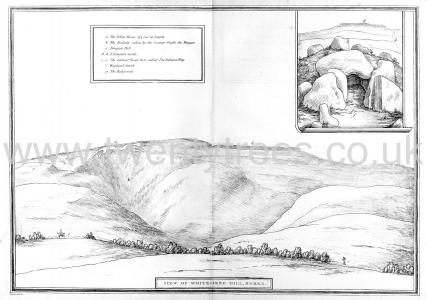Magna Britannica Volume 1
Magna Britannica Volume 1 is in Magna Britannica.
Camps and Earth Works. — This county having been frequently the scene of military operations in remote times, exhibits the remains of many ancient camps. It is not an easy matter to determine by what people they have all been formed: it is probable, however, that those of an irregular shape, upon the Downs, as Letcombe and Uffington castles, both in very commanding situations, were originally British, and afterwards used by the Romans. The former, which is almost circular, has a double vallum, and incloses an area of nearly 26 acres: there is an entrance on the east fide. The entrenchments and ditches of this camp contain eight acres and a half. Uffington castle, a large camp on the White-Horse Hill, just above the village, from which it takes its name, nearly resembles that already described: it is about 700 feet in diameter, from east to west, and 500 from north to south, and is surrounded with a high vallum, and a slighter one on the outside. The views from the inner vallum are very extensive in every direction.
[Some text not included]
A little way to the westward of Uffington castle before-mentioned, near the ridgeway leading over the Downs, there is a considerable tumulus, commonly called Wayland-Smith; over which are, irregularly scattered, several of the large stones called Sarsden Stones, found in that neighbourhood; three of the largest have a fourth laid on them in the manner of the British cromlechs. It is most probable that this tumulus is British.
Near Uffington castle is also the rude figure of a horse which gives name to the hill, formed by cutting away the turf; this appears to be of great antiquity, and more likely to have been a work of the Britons than, as it has been usually supposed, a memorial for Alfred’s victory over the Danes: the figure of a horse, a good deal resembling that above-mentioned, frequently occurs on the British coins. Just under the White-Horse hill there is a round hill called Dragon-hill, which Mr. Aubrey and others have supposed to be the tumulus of some British chief; it is not however by any means certain that it is an artificial mount. Many tumuli are dispersed on the Berkshire downs, especially in the way from Uffington to Lambourn, where a groupe of them has obtained the name of the Seven Barrows.
a and d. Uffington Castle and White Horse [Map].
